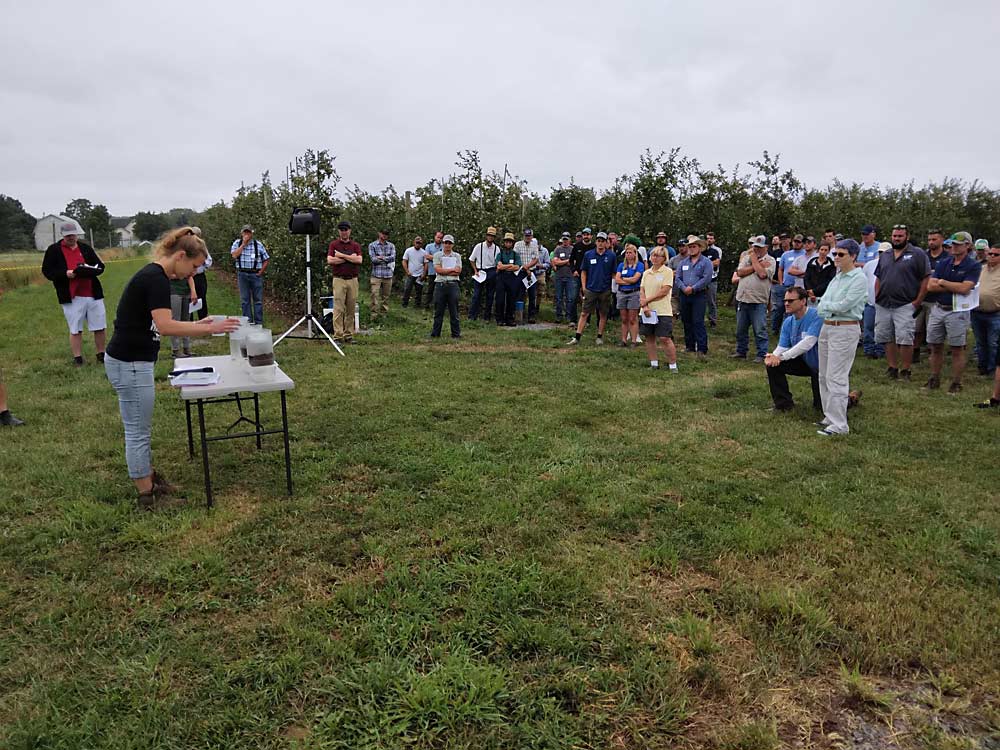
Precision crop load management and the computer vision technology that is gradually improving its accuracy was a major topic during the Cornell Cooperative Extension Lake Ontario Fruit Program’s annual summer fruit tour held in Orleans County, New York, on Aug. 9.
Cornell fruit physiologist Terence Robinson said Cornell has developed crop load management methods in the past, but most involved hand counting of blossoms or fruitlets, a tedious task that few growers were willing to do consistently. But several companies are developing computer vision technologies that can count and size fruit with special cameras and other sensors, replacing tedious hand measurements with images and algorithms and saving growers a lot of time and frustration.
Representatives from several technology companies seeking to bring computer vision to the tree fruit industry were in attendance. Vivid Machines, Dropcopter, Green Atlas, Farm Vision, FruitScout, Moog and Outfield are all offering products in the computer vision space. Some displayed their equipment or gave a demonstration of their special cameras, which can be walked, driven or flown via drone through orchard rows to count blossoms, fruitlets and fruit.
Many other subjects were discussed during the tour, which visited orchards west of Rochester and near the southern coast of Lake Ontario. At Kast Fruit Farm in Albion, Cornell fruit pest management specialist Janet van Zoeren gave presentations on pre-emergent herbicide application timing and the latest developments in mating disruption. Grower Brett Kast said mating disruption works well in his larger blocks, and his trap counts and pest populations have gone down over time. As growers lose access to chemicals, mating disruption could become a more important tool in the future, he said.
Cornell soil health specialist Deborah Aller discussed a statewide orchard soil health project, started in 2021, that seeks to find the soil health indicators that best predict orchard fruit yield and quality, as well as the management practices that impact those indicators. Aller plans to collect samples from low- and high-performing orchard blocks (with a focus on Honeycrisp) from 11 orchards throughout New York, and to analyze their soil health, foliar nutrient content and nematode populations. She also plans to survey growers about their management practices, she said.
At Nesbitt Fruit Farms, grower Shane Nesbitt discussed bloom thinning results on Honeycrisp with the use of the pollen tube growth model, as well as his orchard’s on-farm nursery. Cornell’s Robinson said that, for most of his career, he’s been against growers growing their own nursery trees. However, now that he’s seen the quality of trees the Nesbitts and a few other growers get using the “grow through” method, he’s coming around to the idea of on-farm nurseries.
—by Matt Milkovich







Leave A Comment